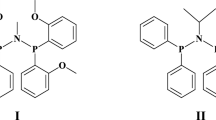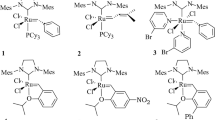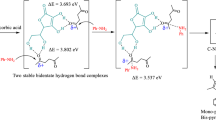Abstract
The rational design of efficient single-atomic (SA) catalysts is essential and highly desirable but impeded by the lack of sufficient acknowledge between structure and property. To this end, it is critical to clarify the effect of the coordination structure of active metal centers on the catalytic activities for the design of such catalysts. Here, we report that different coordination structures of SA Pt catalysts can dramatically influence their activities for anti-Markovnikov hydroboration of alkenes. Compared with the other two coordination structures (Pt-N4 and Pt-O2), the SA Pt species coordinated with three O atoms (Pt-O3) display the highest turnover number value of 3288 for the hydroboration reaction to access the important alkylboronic esters. Density functional theory calculations reveal that a superior catalytic activity can be expected for alkene hydroboration over the three O coordinated Pt species due to the lowest reaction energy (ΔG) limiting step from the reaction phase diagram.
摘要
单原子催化剂的高效合理设计具有十分重要的意义, 但是目 前对于结构和性能之间的关联关系认知不足, 严重阻碍了催化剂 的发展进程. 因此, 清晰阐释金属活性中心的配位结构对于其催化 性能的影响将有利于单原子催化剂的高效设计. 本文研究报道了 单原子Pt催化剂的活性中心配位结构显著影响其在烯烃反马氏硼 氢化反应中的性能表现. 三个O原子配位的Pt单原子催化剂(Pt-O3) 与另外两种配位结构(Pt-N4和Pt-O2)相比, 表现出了更高的催化活 性, 在烯烃反马氏硼氢化反应中的转化数可达到3288. 密度泛函理 论计算表明, Pt-O3催化剂具有超高活性的主要原因是其在反应相 图中具有最低的决速步能垒.
Similar content being viewed by others
References
Chen Z, Vorobyeva E, Mitchell S, et al. A heterogeneous single-atom palladium catalyst surpassing homogeneous systems for Suzuki coupling. Nat Nanotech, 2018, 13: 702–707
Cui X, Li W, Ryabchuk P, et al. Bridging homogeneous and heterogeneous catalysis by heterogeneous single-metal-site catalysts. Nat Catal, 2018, 1: 385–397
Gu J, Hsu CS, Bai L, et al. Atomically dispersed Fe3+ sites catalyze efficient CO2 electroreduction to CO. Science, 2019, 364: 1091–1094
Liu L, Corma A. Metal catalysts for heterogeneous catalysis: from single atoms to nanoclusters and nanoparticles. Chem Rev, 2018, 118: 4981–5079
Liu P, Zhao Y, Qin R, et al. Photochemical route for synthesizing atomically dispersed palladium catalysts. Science, 2016, 352: 797–800
Matsubu JC, Yang VN, Christopher P. Isolated metal active site concentration and stability control catalytic CO2 reduction selectivity. J Am Chem Soc, 2015, 137: 3076–3084
Sun T, Xu L, Wang D, et al. Metal organic frameworks derived single atom catalysts for electrocatalytic energy conversion. Nano Res, 2019, 12: 2067–2080
Yang F, Ding S, Song H, et al. Single-atom Pd dispersed on nanoscale anatase TiO2 for the selective hydrogenation of phenylacetylene. Sci China Mater, 2020, 63: doi: https://doi.org/10.1007/s40843-020-1271-x
Chen LN, Hou KP, Liu YS, et al. Efficient hydrogen production from methanol using a single-site Pt1/CeO2 catalyst. J Am Chem Soc, 2019, 141: 17995–17999
Zhao L, Zhang Y, Huang LB, et al. Cascade anchoring strategy for general mass production of high-loading single-atomic metalnitrogen catalysts. Nat Commun, 2019, 10: 1278
Feng Y, Zhou L, Wan Q, et al. Selective hydrogenation of 1,3-butadiene catalyzed by a single Pd atom anchored on graphene: the importance of dynamics. Chem Sci, 2018, 9: 5890–5896
Fang X, Shang Q, Wang Y, et al. Single Pt atoms confined into a metal-organic framework for efficient photocatalysis. Adv Mater, 2018, 30: 1705112
Jiao L, Jiang HL. Metal-organic-framework-based single-atom catalysts for energy applications. Chem, 2019, 5: 786–804
Xiong Y, Dong J, Huang ZQ, et al. Single-atom Rh/N-doped carbon electrocatalyst for formic acid oxidation. Nat Nanotechnol, 2020, 15: doi: https://doi.org/10.1038/s41565-020-0665-x
Yamada Y, Tsung CK, Huang W, et al. Nanocrystal bilayer for tandem catalysis. Nat Chem, 2011, 3: 372–376
Deng D, Chen X, Yu L, et al. A single iron site confined in a graphene matrix for the catalytic oxidation of benzene at room temperature. Sci Adv, 2015, 1: e1500462
Li S, Xu Y, Chen Y, et al. Tuning the selectivity of catalytic carbon dioxide hydrogenation over iridium/cerium oxide catalysts with a strong metal-support interaction. Angew Chem Int Ed, 2017, 56: 10761–10765
Bayatsarmadi B, Zheng Y, Vasileff A, et al. Recent advances in atomic metal doping of carbon-based nanomaterials for energy conversion. Small, 2017, 13: 1700191
Liu W, Zhang L, Yan W, et al. Single-atom dispersed Co-N-C catalyst: structure identification and performance for hydrogenative coupling of nitroarenes. Chem Sci, 2016, 7: 5758–5764
Li H, Cao C, Liu J, et al. Cobalt single atoms anchored on N-doped ultrathin carbon nanosheets for selective transfer hydrogenation of nitroarenes. Sci China Mater, 2019, 62: 1306–1314
Du Z, Chen X, Hu W, et al. Cobalt in nitrogen-doped graphene as single-atom catalyst for high-sulfur content lithium-sulfur batteries. J Am Chem Soc, 2019, 141: 3977–3985
Wang X, Chen Z, Zhao X, et al. Regulation of coordination number over single Co sites: triggering the efficient electroreduction of CO2. Angew Chem Int Ed, 2018, 57: 1944–1948
Yin XP, Wang HJ, Tang SF, et al. Engineering the coordination environment of single-atom platinum anchored on graphdiyne for optimizing electrocatalytic hydrogen evolution. Angew Chem Int Ed, 2018, 57: 9382–9386
Jiang R, Li L, Sheng T, et al. Edge-site engineering of atomically dispersed Fe-N4 by selective C-N bond cleavage for enhanced oxygen reduction reaction activities. J Am Chem Soc, 2018, 140: 11594–11598
Sun Q, Wang N, Zhang T, et al. Zeolite-encaged single-atom rhodium catalysts: highly-efficient hydrogen generation and shapeselective tandem hydrogenation of nitroarenes. Angew Chem Int Ed, 2019, 58: 18570–18576
Li X, Rong H, Zhang J, et al. Modulating the local coordination environment of single-atom catalysts for enhanced catalytic performance. Nano Res, 2020, 13: doi: https://doi.org/10.1007/s12274-020-2755-3
Fei H, Dong J, Feng Y, et al. General synthesis and definitive structural identification of MN4C4 single-atom catalysts with tunable electrocatalytic activities. Nat Catal, 2018, 1: 63–72
Liu W, Zhang L, Liu X, et al. Discriminating catalytically active FeNx species of atomically dispersed Fe-N-C catalyst for selective oxidation of the C-H bond. J Am Chem Soc, 2017, 139: 10790–10798
Pan Y, Zhang C, Lin Y, et al. Electrocatalyst engineering and structure-activity relationship in hydrogen evolution reaction: from nanostructures to single atoms. Sci China Mater, 2020, 63: doi: https://doi.org/10.1007/s40843-019-1242-1
Frisch AC, Beller M. Catalysts for cross-coupling reactions with non-activated alkyl halides. Angew Chem Int Ed, 2005, 44: 674–688
Mlynarski SN, Schuster CH, Morken JP. Asymmetric synthesis from terminal alkenes by cascades of diboration and cross-coupling. Nature, 2014, 505: 386–390
Coombs JR, Haeffner F, Kliman LT, et al. Scope and mechanism of the Pt-catalyzed enantioselective diboration of monosubstituted alkenes. J Am Chem Soc, 2013, 135: 11222–11231
Kamei T, Nishino S, Shimada T. Ni-catalyzed hydroboration and hydrosilylation of olefins with diboron and silylborane. Tetrahedron Lett, 2018, 59: 2896–2899
Ji P, Sawano T, Lin Z, et al. Cerium-hydride secondary building units in a porous metal-organic framework for catalytic hydroboration and hydrophosphination. J Am Chem Soc, 2016, 138: 14860–14863
Park J, Lee Y, Kim J, et al. Copper-catalyzed diastereoselective addition of diborylmethane to N-tert-butanesulfinyl aldimines: synthesis of β-aminoboronates. Org Lett, 2016, 18: 1210–1213
Kisan S, Krishnakumar V, Gunanathan C. Ruthenium-catalyzed anti-markovnikov selective hydroboration of olefins. ACS Catal, 2017, 7: 5950–5954
Zhang L, Zuo Z, Leng X, et al. A cobalt-catalyzed alkene hydroboration with pinacolborane. Angew Chem Int Ed, 2014, 53: 2696–2700
Cruz TFC, Lopes PS, Pereira LCJ, et al. Hydroboration of terminal olefins with pinacolborane catalyzed by new mono(2-iminopyrrolyl) cobalt(II) complexes. Inorg Chem, 2018, 57: 8146–8159
Chen X, Cheng Z, Lu Z. Iron-catalyzed, Markovnikov-selective hydroboration of styrenes. Org Lett, 2017, 19: 969–971
Zhuang L, Ge L, Yang Y, et al. Ultrathin iron-cobalt oxide nanosheets with abundant oxygen vacancies for the oxygen evolution reaction. Adv Mater, 2017, 29: 1606793
Chen Y, Ji S, Sun W, et al. Discovering partially charged singleatom Pt for enhanced anti-Markovnikov alkene hydrosilylation. J Am Chem Soc, 2018, 140: 7407–7410
Zhu Y, Cao T, Cao C, et al. One-pot pyrolysis to N-doped graphene with high-density Pt single atomic sites as heterogeneous catalyst for alkene hydrosilylation. ACS Catal, 2018, 8: 10004–10011
Kresse G, Furthmüller J. Efficiency of ab-initio total energy calculations for metals and semiconductors using a plane-wave basis set. Comput Mater Sci, 1996, 6: 15–50
Kresse G, Hafner J. Ab initio molecular-dynamics simulation of the liquid-metal-amorphous-semiconductor transition in germanium. Phys Rev B, 1994, 49: 14251–14269
Perdew JP, Burke K, Ernzerhof M. Generalized gradient approximation made simple. Phys Rev Lett, 1996, 77: 3865–3868
Zhang Y, Yang W. Comment on “Generalized gradient approximation made simple”. Phys Rev Lett, 1998, 80: 890
Henkelman G, Uberuaga BP, Jónsson H. A climbing image nudged elastic band method for finding saddle points and minimum energy paths. J Chem Phys, 2000, 113: 9901–9904
Wang Z, Liu X, Rooney DW, et al. Elucidating the mechanism and active site of the cyclohexanol dehydrogenation on copper-based catalysts: a density functional theory study. Surf Sci, 2015, 640: 181–189
Cao XM, Burch R, Hardacre C, et al. An understanding of chemoselective hydrogenation on crotonaldehyde over Pt(111) in the free energy landscape: the microkinetics study based on firstprinciples calculations. Catal Today, 2011, 165: 71–79
Abild-Pedersen F, Greeley J, Studt F, et al. Scaling properties of adsorption energies for hydrogen-containing molecules on transition-metal surfaces. Phys Rev Lett, 2007, 99: 016105
Fernández EM, Moses PG, Toftelund A, et al. Scaling relationships for adsorption energies on transition metal oxide, sulfide, and nitride surfaces. Angew Chem Int Ed, 2008, 47: 4683–4686
Han M, Fu X, Cao A, et al. Toward computational design of catalysts for CO2 selective reduction via reaction phase diagram analysis. Adv Theor Simul, 2019, 2: 1800200
Tian X, Guo C, Zhong H, et al. Exceptional stability and chemical mechanism over spinel ZnCr2O4 catalyst for HCl oxidation to Cl2. Mol Catal, 2019, 470: 82–88
Acknowledgements
This work was supported by the National Key R&D Program of China (2018YFA0702003) and the National Natural Science Foundation of China (21890383, 21671117, 21871159 and 21901135). We thank the BL14W1 station in Shanghai Synchrotron Radiation Facility (SSRF) and 1W1B station for XAFS measurement in Beijing Synchrotron Radiation Facility (BSRF).
Author information
Authors and Affiliations
Contributions
Xu Q designed and performed the experiments, analyzed the data, and wrote the paper. Guo C and Xiao J conducted the density functional theory calculations and contributed to the writing of the paper. Tian S and Zhang J assisted to carry out the experiments. Chen W and Zheng L helped with XAFS characterization and corresponding data analysis. Cheong WC assisted in HAADF-STEM and EDX elemental mapping characterizations. Gu L helped with the AC HAADF-STEM characterization. Liu Q and Li B helped analyze the data. Wang D and Li Y conceived the research project, analyzed the results and wrote the paper. All authors contributed to the general discussion.
Corresponding author
Additional information
Conflict of interest
The authors declare that they have no conflict of interest.
Supplementary information
Supporting data are available in the online version of the paper.
Qi Xu received his BSc degree from the University of Science and Technology of China in 2017. Now, he is a PhD student under the supervision of Prof. Dingsheng Wang at Tsinghua University. His research interests mainly focus on the design and fabrication of single-atomic catalysts for heterogeneous catalysis.
Chenxi Guo received his PhD degree from the Queen’s University of Belfast in 2018. He is currently an Assistant Research Associate at Dalian Institute of Chemical Physics, Chinese Academy of Science. His research interests focus on the first principles calculations, theoretical catalysis, and rational design of catalytic materials.
Shubo Tian received his BSc (2013), MSc (2016), and PhD (2019) degrees from Hebei Normal University, University of the Chinese Academy of Sciences, and Tsinghua University, respectively. He is currently a postdoctor in the National University of Singapore. His research interests are focused on the syntheses and applications of isolated single-atom-site and cluster catalysts.
Dingsheng Wang received his BSc degree from the Department of Chemistry and Physics, University of Science and Technology of China in 2004, and his PhD degree from the Department of Chemistry, Tsinghua University in 2009, under the supervision of Prof. Yadong Li. He did his postdoctoral research at the Department of Physics, Tsinghua University, with Prof. Shoushan Fan. He joined the faculty of the Department of Chemistry, Tsinghua University in 2012.
Rights and permissions
About this article
Cite this article
Xu, Q., Guo, C., Tian, S. et al. Coordination structure dominated performance of single-atomic Pt catalyst for anti-Markovnikov hydroboration of alkenes. Sci. China Mater. 63, 972–981 (2020). https://doi.org/10.1007/s40843-020-1334-6
Received:
Accepted:
Published:
Issue Date:
DOI: https://doi.org/10.1007/s40843-020-1334-6




